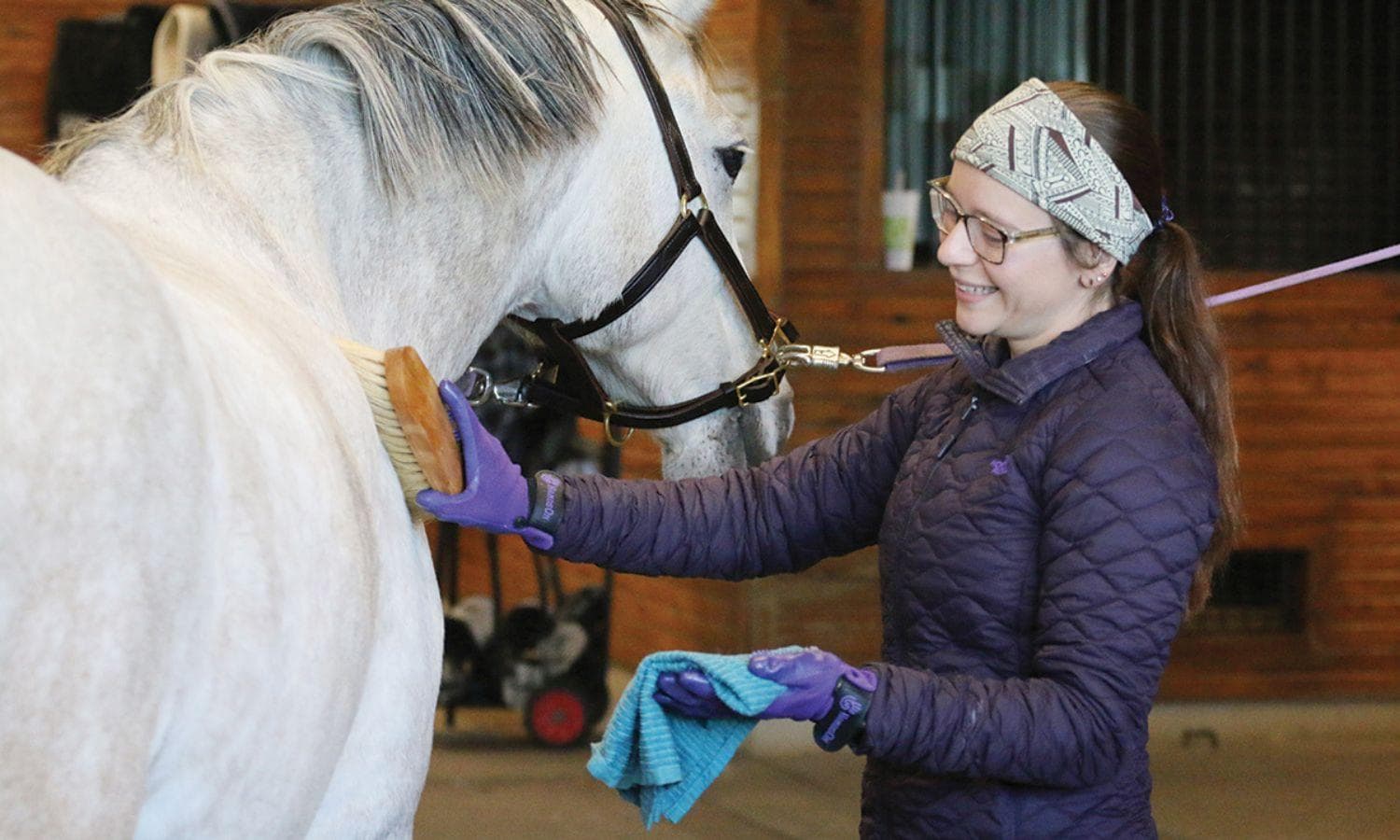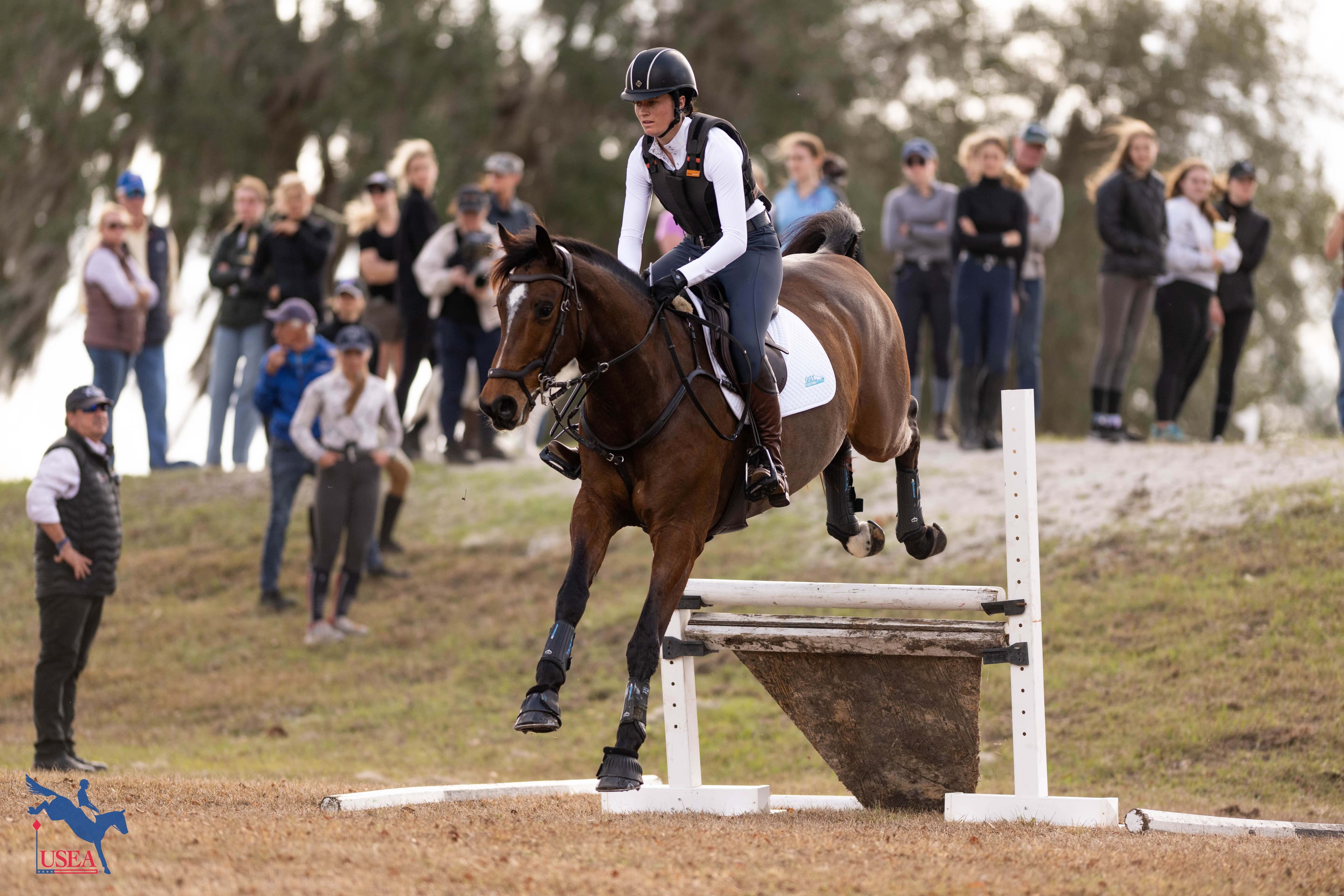Key Steps to Safe Cross-Country Riding, Part Four: Overcoming Fear and Changing a Negative Attitude
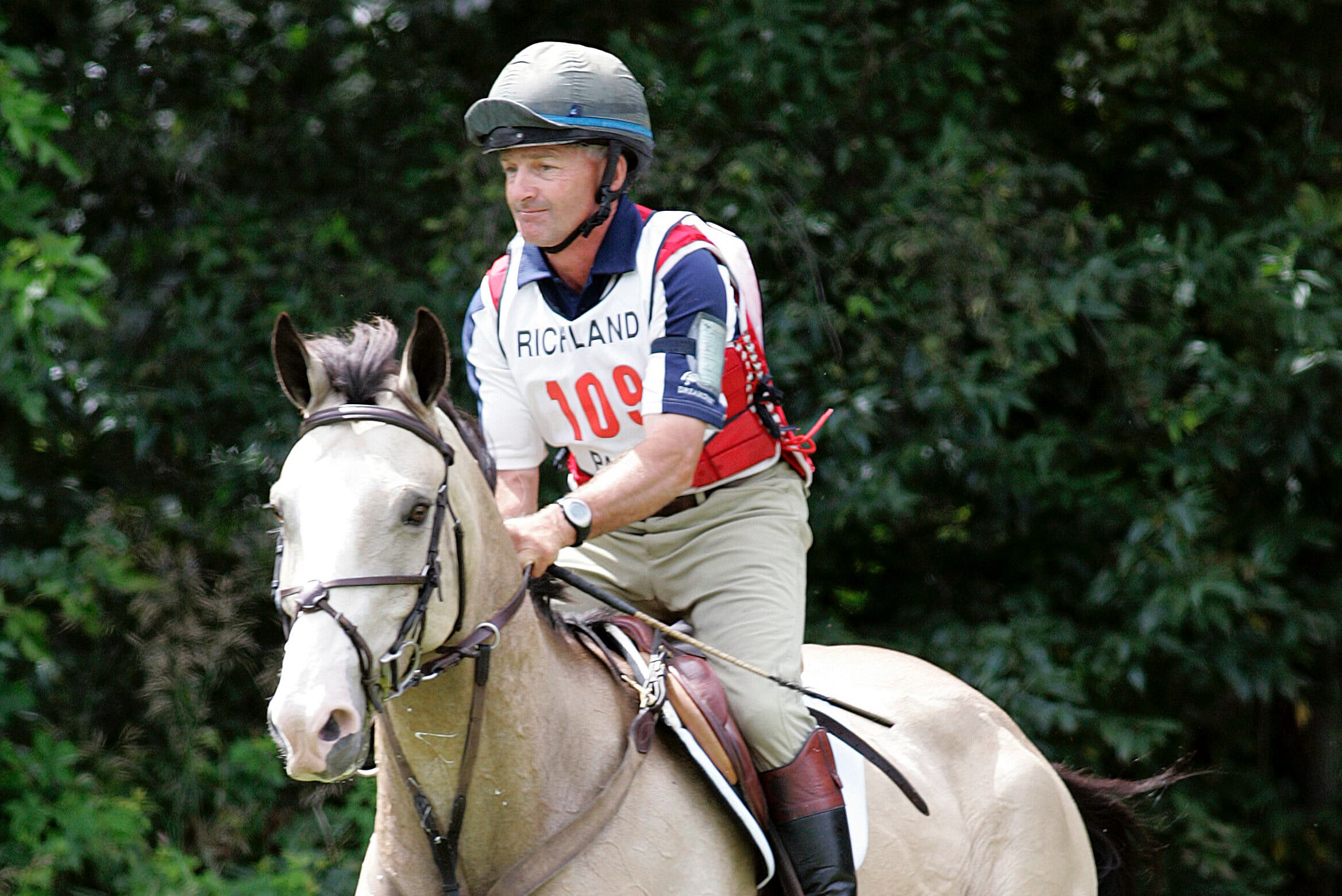
This article was originally published in volume 38, issue 5 of Eventing USA magazine and is the final in a four-part series geared toward making cross-country riding safer written by renowned horseman, William Micklem. Click to read part one, part two, and part three.
Why do we not talk more about fear when fear is a common emotion in cross-country riders? There is probably no sane person who is totally fearless and everyone has his or her limits. Even a Grand Prix race car driver, who is brave enough to average 150 miles per hour around a circuit, may well frighten himself trying to improve his time by just half a second. Fear is a basic human mechanism to place limits on what we do. So we should not be embarrassed by it, or fail to seek help either overcoming fear or changing a negative attitude.
Horse Riding and Fear
Horses are inspirational. Contact with horses can stimulate us positively enabling improved performance in all aspects of our lives. Then as we successfully face up to more challenges we become more confident and braver. In this way, horses can help us cope with fear. The other side of this coin is that riding, and in particular cross-country riding, can be frightening to many riders. Even if you only rate your fear as 4 out of 10 you will become both a better rider and a safer rider by taking this down to 1. This is why we must not ignore this subject.
People say that they ride best on cross-country when their adrenaline is flowing, but it is important to distinguish whether this is because of being motivated or being frightened. As fear is mentally and physically paralyzing, your performance will be adversely affected to some degree, making you less safe. This does not mean that you have to give up the sport because confidence can quickly return with a proper training progression and the right coach. If you are confident and motivated, your concentration and reactions will probably be good, but if you are frightened you will become tense, lose your suppleness, and be slow to react. It is also important to remember that it has been proven that a nervous rider makes a horse more nervous, particularly at a novice level, which can potentially lead to dangerous fear reactions in the horse. A negative attitude will compound these problems, creating tension and fears without logical reason. So, many riders have this double challenge to overcome, fear, and a negative attitude.
Fear of the Unknown and the Known
There are two main types of fear: the fear of the unknown and the fear of the known. Fear of the unknown can be overcome by going to an experienced coach with a good track record, and by watching and talking to other riders of your level who are progressing successfully. In addition, a good coach will demonstrate and explain every step in advance of you doing it, which minimizes the unknown. Then as you develop trust in both your coach and horse you will soon wonder why you ever had this worry. The right horse that will look after you is a key element, which is why it is important to choose a breed of horse or pony that is naturally sure-footed and sensible. Without a doubt, too many riders have horses that, despite initially looking impressive, are ungainly and slow to react across the country. I cannot emphasize strongly enough how important it is to undertake fifth leg training and to ride a horse that has a strong instinct for self-preservation.
Alternatively, you may know what you are frightened of. You may already have had a bad experience yourself, or seen someone else in trouble, or you may have just imagined a disaster about to happen. The fact that this is only imagined makes this fear no less real than the others. Once again a coach can help enormously as good coaching opens the door to confident progress. A good coach will ensure you avoid bad experiences by proceeding one small step at a time so you easily achieve the desired result at each stage. Then, with continual revision, you will find yourself becoming more confident and braver. This will ensure that at every stage you practice good quality work until it feels natural – what is called unconscious competence. When this happens fear melts away as the exercise becomes as natural as riding a bike.
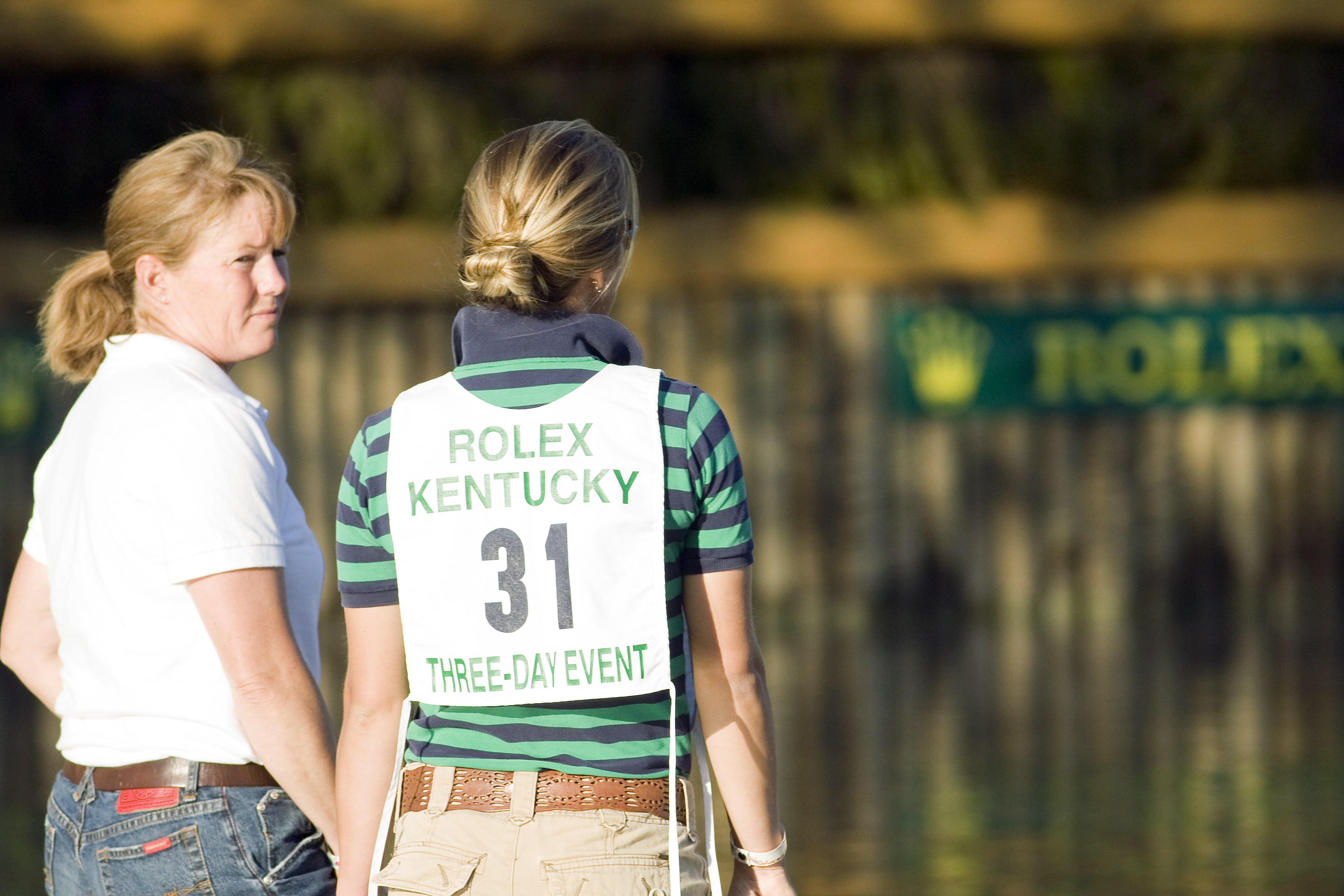
Negative Attitude
Fear is often connected to a negative mental attitude. There are two connected aspects of this negativity:
The first is when you focus on all the things that are wrong rather than those that are right. I make it a golden rule to work from what my students and their horses can do, rather than what they can’t do, and this makes a huge difference. It enables quality practice from the beginning and then increased confidence and accelerated progress are largely inevitable. Secondly, with so many riders there is that ‘maggot in the mind’ saying, “I can’t do this . . . the other riders are better . . . I’m dead!” What is needed instead is a ‘good genie’ saying, “This is fun . . . I can do this . . . Yes!” In both these cases, by working from the positive there is a hugely beneficial effect on your performance. Being positive is very efficient and self-motivating as a method of training and pulls you forward while negativity just builds barriers and destroys confidence and dreams.
So the engine of success is readily achievable action steps and thinking positive. The secret is to first set your long term aims and plan backward to where you are now. Then execute these bite-size steps directed specifically towards achieving your medium term goals. This stacks the odds in your favor and produces the opposite of a vicious circle. Being confident that we have the internal resources and method to take on a new challenge, we accomplish more and in turn become more confident. A good coach will also encourage you to watch riders and trainers who are obviously doing good quality work because their standards and confidence will rub off on you. This is the beginning of role playing.
Role Playing
The use of role playing and modeling is a powerful tool I use to overcome such challenges as fear and a negative attitude. Role playing is more natural to humans than many realize because role playing and modeling is already used to some degree by us all in our daily lives. It is almost impossible to go through life without learning from and copying those around you. My twist to this basic truth is that you can make this more effective by first identifying what is missing in your mental armory and then find the right role models to improve your performance in these specific areas.
Having identified the mental attributes required, a role model is selected that you like and know well – often not a famous person. Just by focusing regularly on the role model and their desired qualities, our behavior will automatically move towards this image. This is a huge achievement for little investment. Role playing allows us, for example, to tap into the ‘I am the greatest’ spirit of Mohammed Ali and the ‘can do’ attitude of Tiger Woods, and protects us from the paralyzing pessimism that is all too characteristic of many underachievers. With regular use of role playing you will find that one image or keyword can trigger a wide range of desired qualities. Alternatively, I use a number of specific hats to make the whole process even more accessible and effective. The greatest value of role playing is that gradually you will not be role playing because these attitudes will become an established part of who you are on a daily basis.

Fear of Falling
Particularly for the young, the fear of falling off can be enormously reduced by learning how to fall and getting fit enough to fall, under the direction of a qualified gymnastics coach. This is a positive strategy that will benefit the vast majority of riders because riders of all levels do have falls at times. Of course, every effort should be made to avoid falls, but this does not reduce the value of learning how to do this. It is well worth watching the National Hunt jockeys who do this on a regular basis. They put their chin on their chest while rounding the back and tucking up their legs, making themselves ready to roll when they hit the ground.
A Wise Investment
Walking the course with an experienced coach or rider is probably one of the best investments in safety that you can make. However, it is important that they have seen you ride and know your strengths and weaknesses, otherwise, although their advice could be sensible, it may be inappropriate in your situation. What the experienced coach will do is make the course walk a positive experience. They will put things in the right way, concentrating on the things you should do rather than the things you shouldn’t do, and only ask you to do things of which you are capable.
The most valuable part of course walking is to understand why certain fences and routes are easy if ridden in a particular way and what your specific line and speed should be. Doubt and a lack of clarity lead to a lowering of confidence that leaves you unfocused and less safe. As doubt is reduced and confidence increased in how you are going to ride the fences, you are much more likely to achieve the desired result and be safer. Of course, the whole philosophy of cross-country riding should be to leave room for error so a small inaccuracy should not create a dangerous situation, and with the right choice of daily exercises and horse, everything will build towards this.
Your coach will also be able to advise you on the safety equipment that should be used to prevent injury in the event of an accident. The skull cap is the same as that worn by steeplechase jockeys, but check with your association that you have an approved model. Many jockeys also wear a hunting tie around the neck, without a tie pin, so this is also recommended. The body protector and shoulder pads have also proved extremely effective in reducing injury and should always be worn, but make sure they fit well enough so that your movement is not restricted. However, the greatest pay off for using a good coach is that their expertise will make an accident much less likely to happen.
Frightened of Water?
Many riders and horses are frightened of water because of bad experiences. It is worth watching a horse’s forelegs on the landing side of a fence to understand why many falls happen. They should land with their forelegs apart, putting weight on the foreleg closest to the fence then on to the other foreleg as the landing leg leaves the ground. The same thing happens naturally landing off a bank and should happen when landing off a bank into water. But, because of fear, something different often occurs.
When a horse is frightened dropping down into water, they tend to put their forelegs together as a pair. This means that both forelegs take weight at the same time and they lock out, as when a horse sleeps standing up. Then they either trip or fall in the water and riders become convinced there is a hole in the water. So jumping into water must be started with very small drops and shallow water and practiced until the horse consistently lands normally with the forelegs apart.
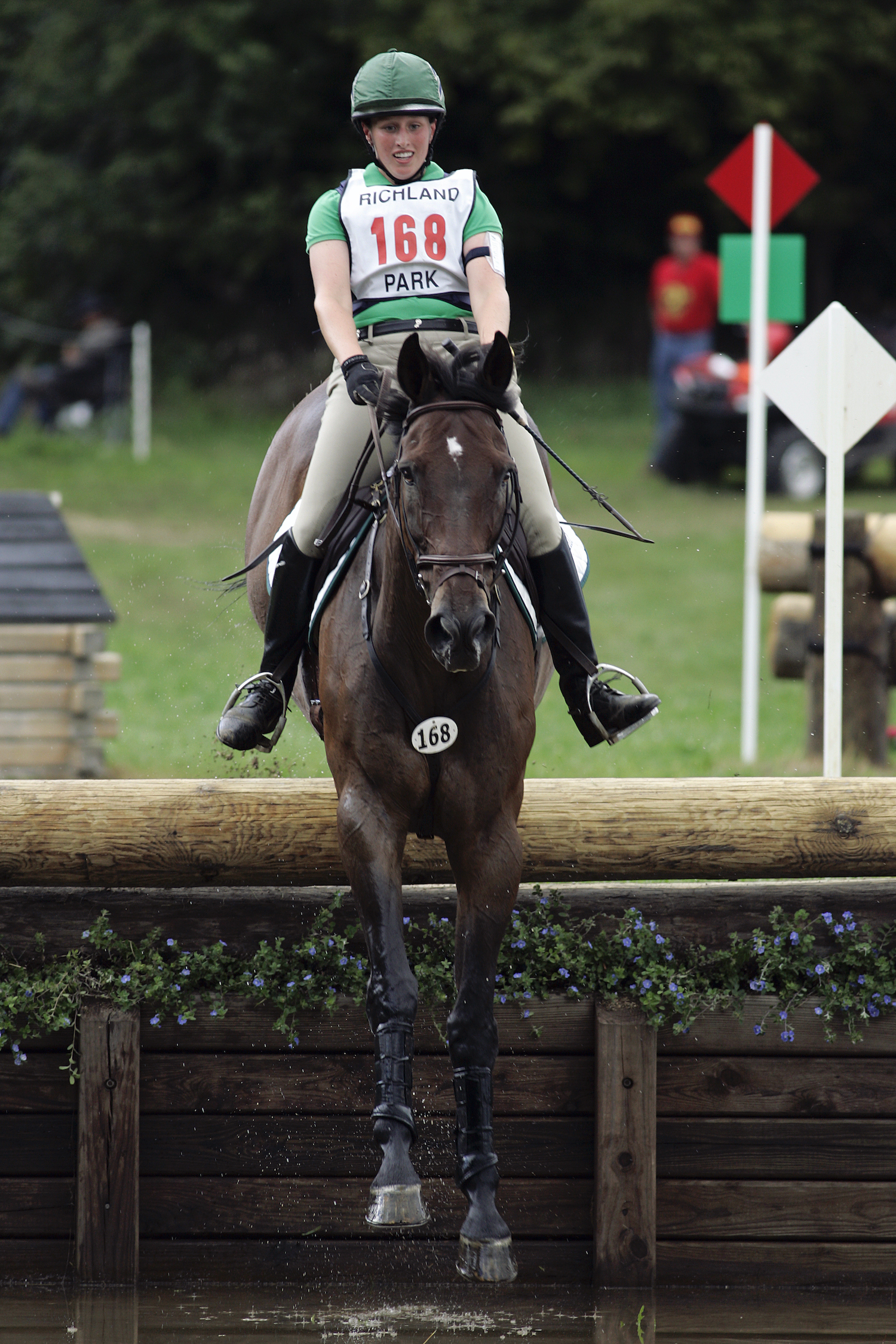
Case History 1
I know what it is like to be afraid, or in fact very afraid! As a child, a cross-country schooling gave me that same wobbly feeling deep inside that my fear of heights has also always induced. So this does give me a certain qualification to talk about developing cross-country confidence. The most important component in this change was having someone who supported me and continued to encourage me to ‘have a go’ in a progressive manner. This may sound trite but it is totally true. Good coaching makes a difference and the golden key to developing cross-country confidence is to have a good coach. A good coach is more than someone who knows about cross-country riding. A good coach is someone who understands how you are feeling, and by developing your trust and confidence as well as your expertise, can open the door to confident cross-country riding. It is worth remembering that a 10 percent reduction in fear will probably lead to a 30 percent increase in performance.
So it was not long before I loved cross-country. I remember so well going to the Pony Club horse trials championships at Cheltenham racecourse when the course was really challenging and rider after rider had problems. I was riding a really great pony called Charlie’s Aunt and all I wanted to do was get out there on the cross-country. We flew around and my fear of cross-country was well and truly history.
Case History 2
Pippa Funnell is now a multi medallist at the highest level of horse trials but after a period of almost uninterrupted success in international competition at junior and young rider levels she had a difficult beginning to her senior career. After a long period of disappointment, Pippa used a sports psychologist who emphasized the importance of working from her strengths. As Pippa said, “It made a huge difference not only to me but in particular to my horses. I worked from their strengths as well, from the things they could do rather than what they couldn’t do. This has made all the difference.”
About William Micklem
Growing up in a family of horsemen in Cornwall, England, William Micklem and his five siblings spent their childhood competing in Pony Club activities and hunting with the Fourburrow Hunt. After passing his British Horse Society Instructors Certificate (BHSI) in 1973, William went to work as chief instructor for Robert Hall in both Fulmer, England, and Pepperell, U.S., which is when he began a lifetime equestrian association with Karen O’Connor, before coming to Ireland to work for Bord na gCapall (The Irish Horse Board) in 1976. He also started training the Irish Junior and Young Rider Horse Trials Teams and designed Ireland’s renowned Golden Saddle Scheme for top young competition riders from dressage, show jumping, and horse trials. He passed his Fellowship of the British Horse Society in 1981. Micklem has found horses for some of the top riders in the world, including Biko, Custom Made, Giltedge, Mr. Maxwell, and Mandiba for the O’Connor Event Team. To find out more about William Micklem, visit his website at www.williammicklem.com.


